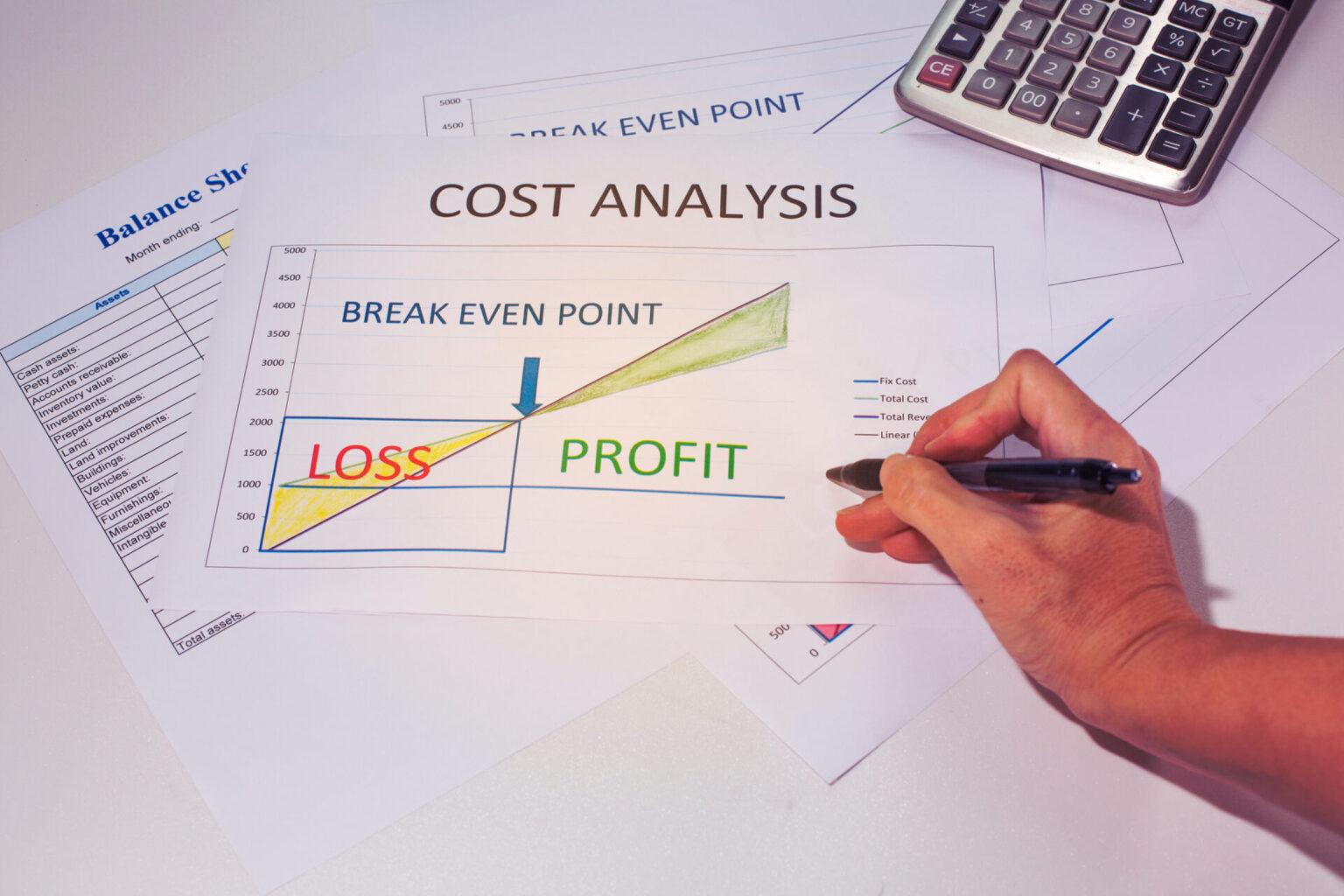The breakeven point is an important number every small business owner needs to understand. It tells you how many units you must sell—or how much revenue you must generate—to cover both your fixed and variable costs. Understanding this number allows you to make informed pricing decisions, set realistic sales targets, and evaluate how changes in sales or expenses will affect your ability to break even.
What is a Breakeven Point?
The breakeven point is the point where total revenue equals total expenses. In other words, it’s the point where your business is making just enough money to cover its fixed and variable costs, yielding neither a profit nor a loss.
Why does this matter? By knowing your breakeven point, you can understand the level of sales required to cover all costs, making it an essential tool for pricing, forecasting, and planning.
The Breakeven Point Formula
To determine your breakeven point in units, you’ll need three key numbers:
- Fixed Costs — Expenses that don’t change regardless of sales volume, such as rent, salaries, or insurance.
- Variable Costs — Expenses that fluctuate based on production or sales, like raw materials, packaging, or sales commissions.
- Selling Price — The price you charge per unit.
The formula is straightforward:
Breakeven Point in Units = Fixed Costs ÷ (Selling Price per Unit – Variable Cost per Unit)
An Example of Breakeven Analysis
Altacorp Ltd. has calculated the following:
- Fixed Costs: $60,000 per year (including rent, salaries, and other overhead).
- Variable Cost per Unit: $0.80.
- Selling Price per Unit: $2.00.
Applying the formula:
Breakeven Point = $60,000 ÷ ($2.00 – $0.80)
Breakeven Point = $60,000 ÷ $1.20
Altacorp needs to produce and sell 50,000 units per year to cover its fixed and variable costs. At this point, it will break even.
What if Sales Change?
If sales drop due to market shifts or other circumstances, you may not reach your breakeven point and risk falling short of covering expenses. In that case, you have two options:
- Increase your selling price.
- Decrease fixed or variable costs.
The Impact of Reducing Fixed Costs
If Altacorp finds a way to reduce its fixed costs from $60,000 to $50,000 (perhaps by cutting overhead or reducing salaries), its breakeven point becomes:
$50,000 ÷ ($2.00 – $0.80) = 41,667 units
This means Altacorp can now break even by selling roughly 41,667 units per year, a significant improvement over its original target.
The Impact of Reducing Variable Costs
If Altacorp can reduce its variable cost from $0.80 to $0.60 per unit (perhaps by finding a more cost‑effective supplier), its breakeven point becomes:
$60,000 ÷ ($2.00 – $0.60) = 42,858 units
In this case, the breakeven point is roughly 43,000 units, down from 50,000 units when variable costs were higher.
Understanding the Bigger Picture
Breakeven analysis is a vital piece of cost‑volume‑profit (CVP) planning. It allows you to understand how pricing, fixed costs, variable costs, and sales volume interact. By applying this knowledge, you can set pricing that ensures profitability, evaluate opportunities to reduce expenses, and make informed decisions as you build or adjust your business.
Need help?
If you’d like support applying breakeven analysis to your own business or exploring other ways to understand your financials, our Business Strategists can help.
